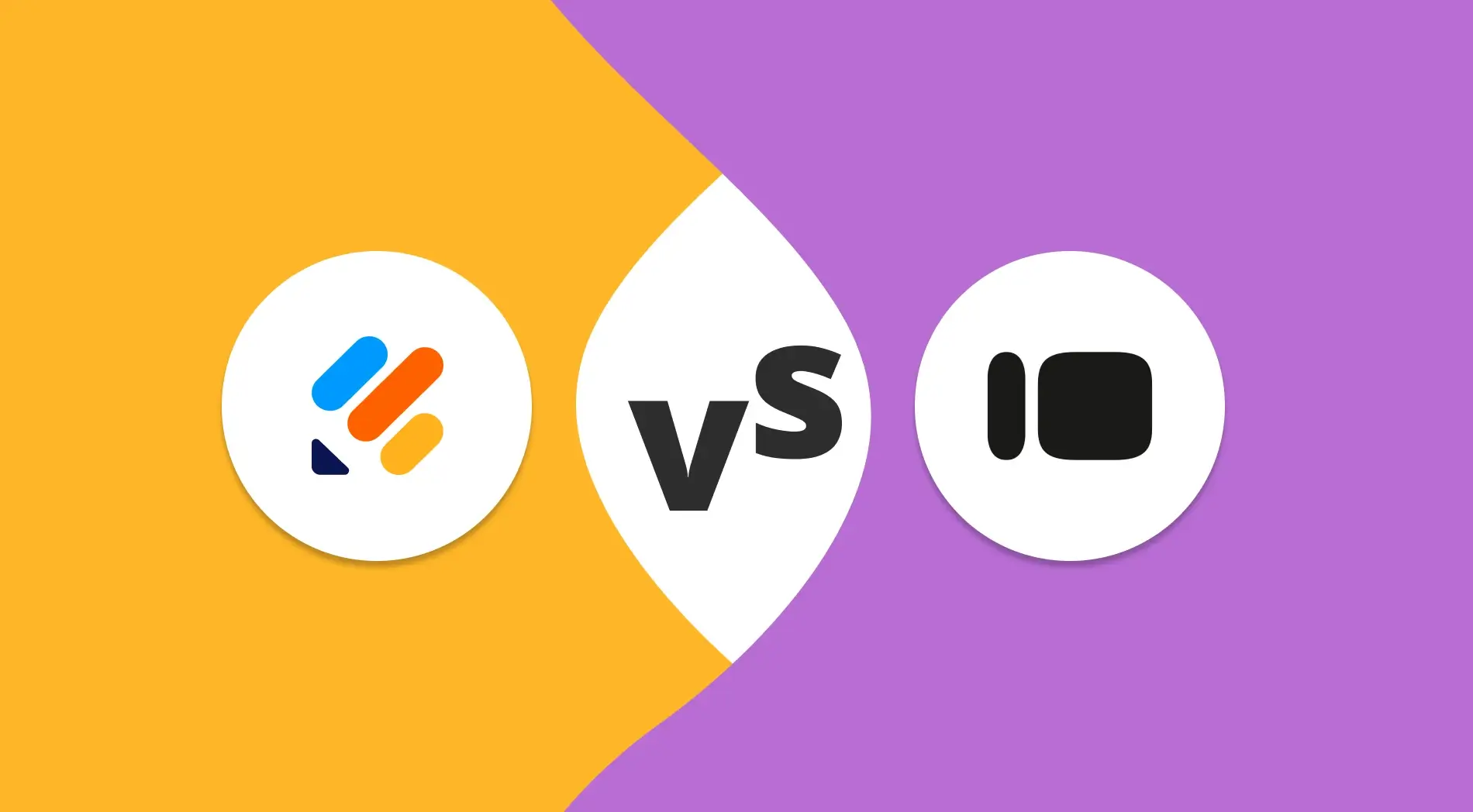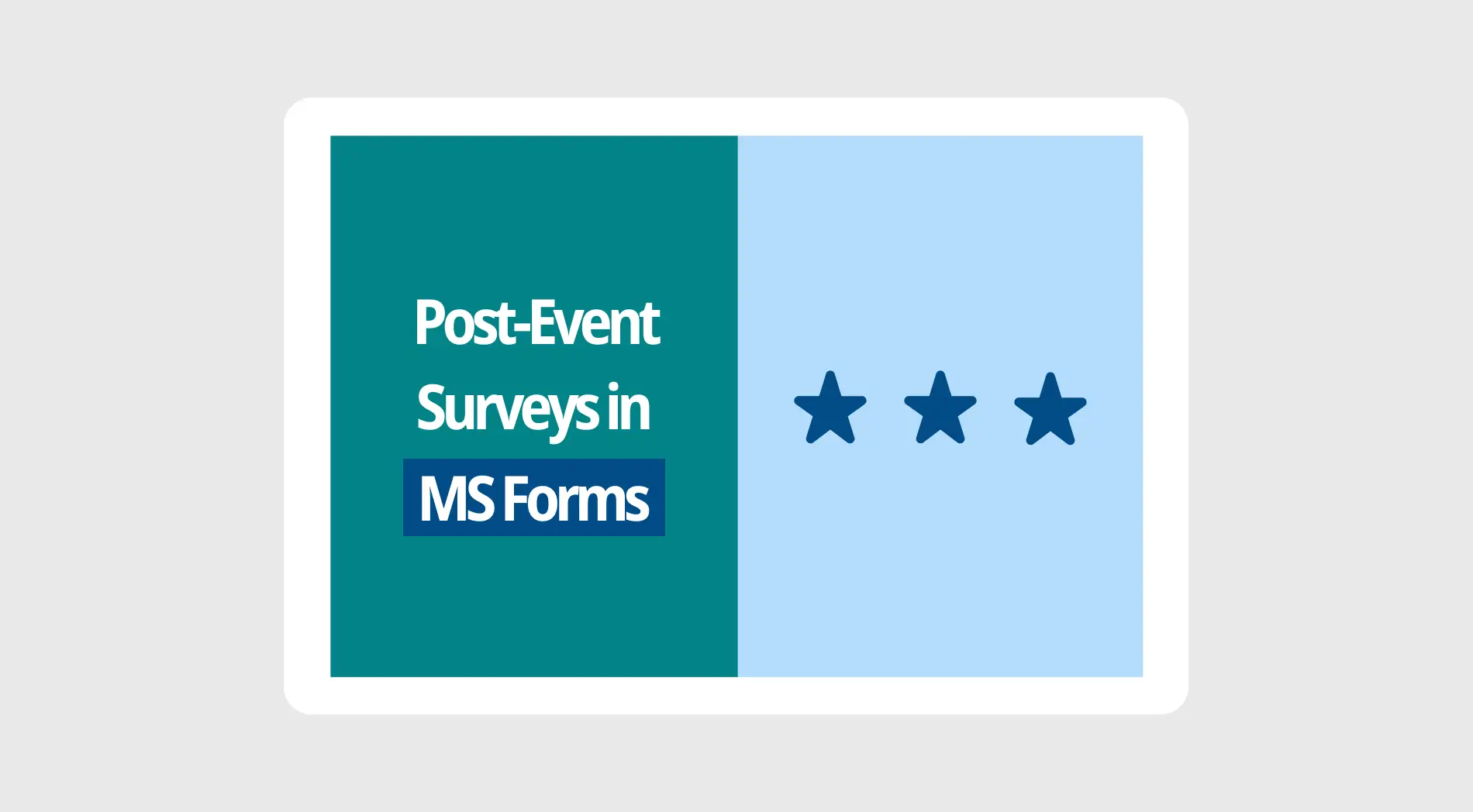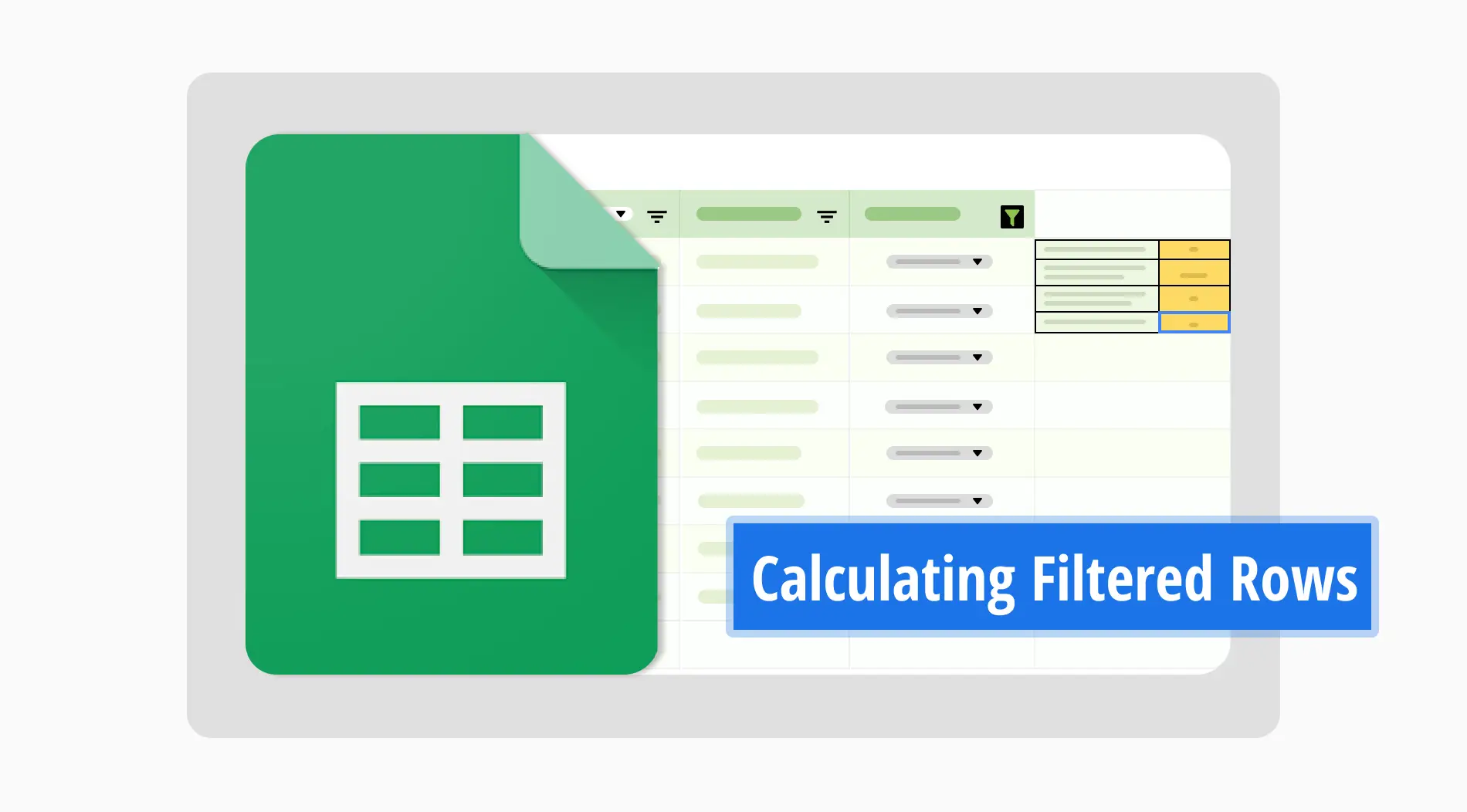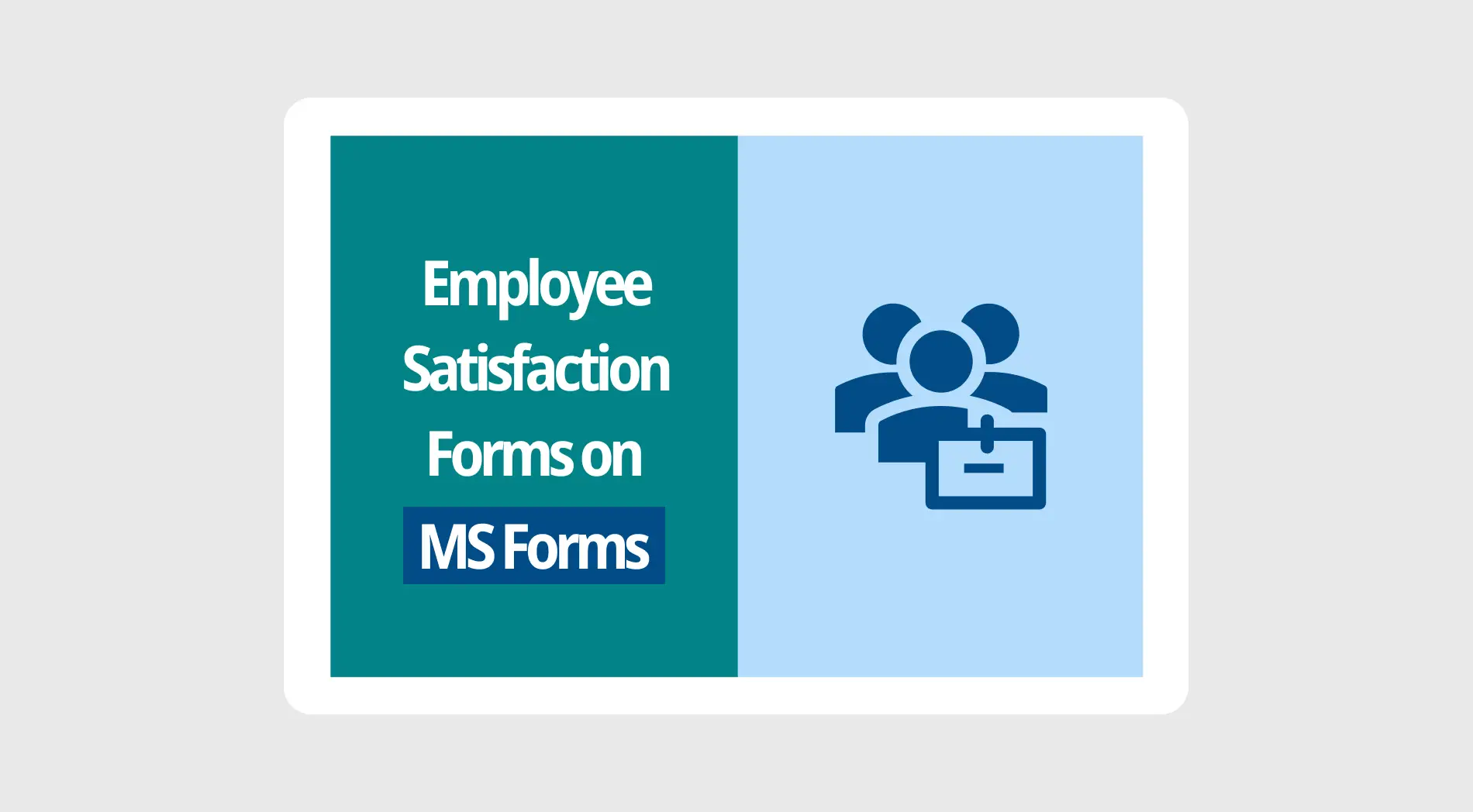Bir işletme veya girişim sahibi, öğretmen veya öğrenciyseniz web formları ve belgeler oluşturarak veri toplamanız gerekebilir. Günümüzde ihtiyacınız olan tek şeyin, istediğiniz sayıda form oluşturmak için güçlü, çevrim içi bir form oluşturucu olması harika. Ancak mükemmel aracı bulmak için fiyatlandırma, form şablonları ve diğer gelişmiş özellikleri göz önünde bulundurmalısınız.
Bu makalede, adını mutlaka duymuş olduğunuz iki güçlü form oluşturma aracını karşılaştıracağız: Typeform ve Jotform. Bu karşılaştırma, araçların yetenekleri ve temel özellikleri hakkında tam bir anlayış kazanmanıza yardımcı olacaktır. Bu nedenle, hangi platformun daha güçlü olduğunu görmek için makalemizi dikkatle incelemelisiniz. Harika bir ek bilgi; her iki platforma bir alternatif olabilecek başka bir uygulama da keşfedeceksiniz.
İlk bakışta Jotform vs. Typeform
Her güçlü araç, hızlı veri toplama, sezgisel bir arayüz, müşteri desteği ve bütçenizi zorlamayacak uygun fiyatlı planlar sunmalıdır. İlk bakışta, Jotform ve Typeform, bu temel özellikleri sunan benzer araçlar gibi görünebilir. Ancak daha detaylı bir inceleme, her platformun kendi güçlü ve zayıf yönlerinin netleşmesini sağlayacaktır.
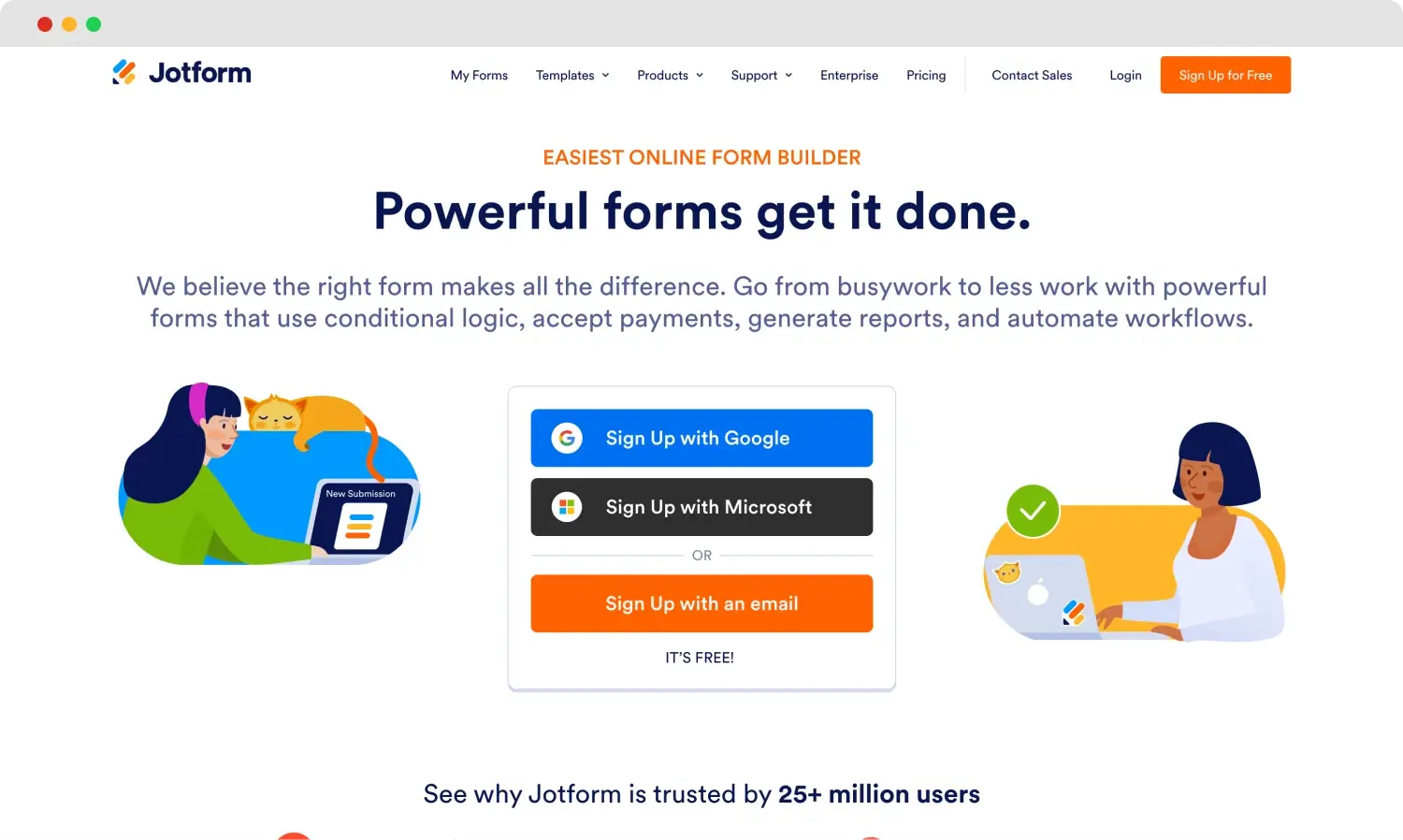
Jotform'un ana sayfası
Jotform incelememize başlayalım. Jotform, sürükle ve bırak arayüzü kullanarak anket, sınav, test ve detaylı formlar oluşturmanıza yardımcı olan çok yönlü bir çevrim içi form oluşturucudur. Platform, özelleştirme konusunda güçlüdür ve PDF'leri düzenleme, mobil uygulamalar ve raporlar oluşturma ve e-imza toplama gibi geniş bir yelpazedeki iş ihtiyaçlarını karşılar.
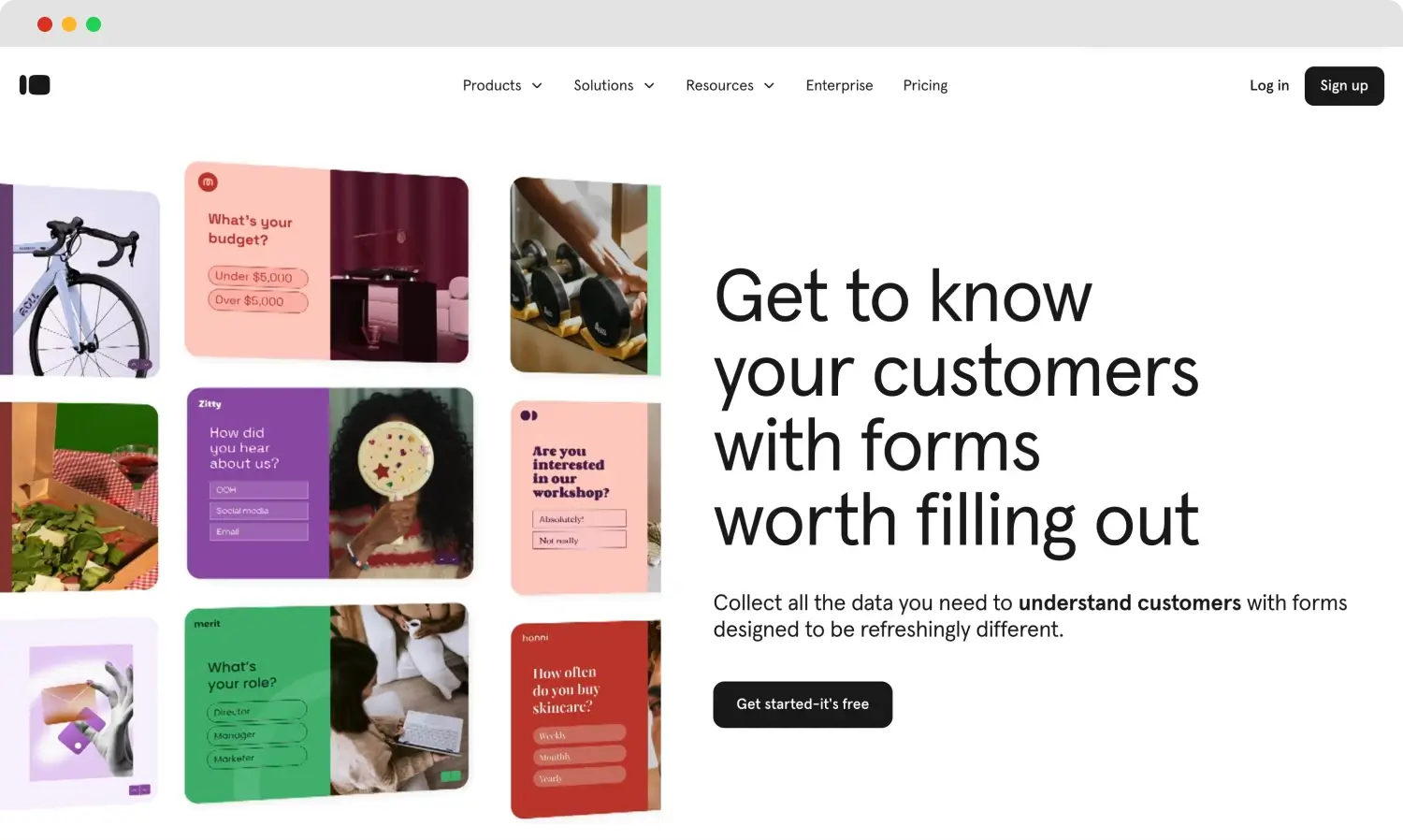
Typeform'un ana sayfası
Typeform da web formları ve anketler oluşturmak için tasarlanmış kullanıcı dostu bir form oluşturucu platformdur. Kullanıcı etkileşimini arttıran ve formlar arasında gezinmeyi kolaylaştıran çekici arayüzü ve tek ekranda tek soru yaklaşımı ile öne çıkar. Typeform, kişiselleştirilmiş yanıtlar için koşullu mantık, yanıt verilerini keşfetmek için analitik araçlar ve form performansını optimize etmek için bazı AI seçenekleri gibi özellikler sunar.
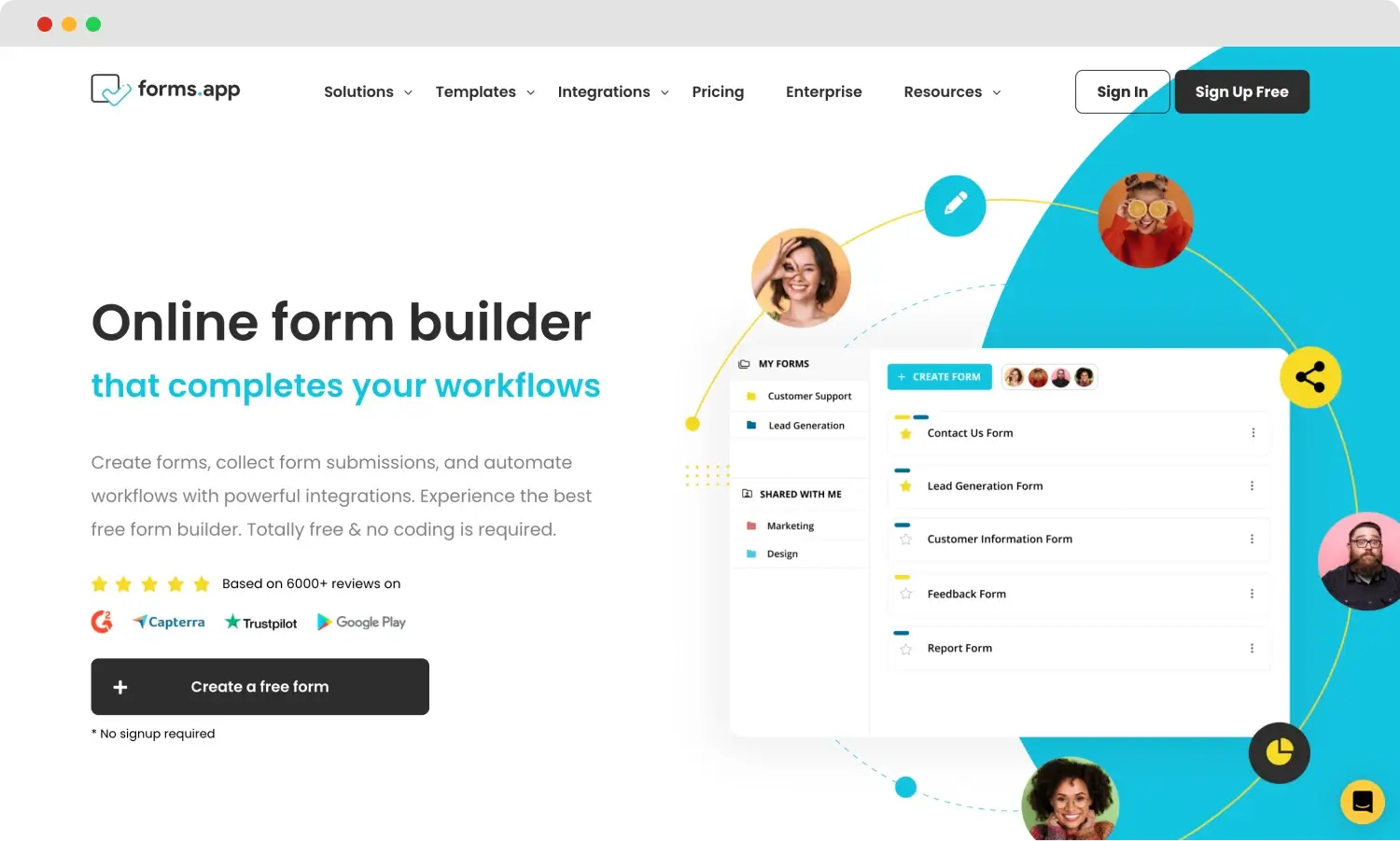
forms.app'in ana sayfası
İlerlerken, sizi başka bir platformla tanıştırmak istiyoruz. forms.app, en iyi Google Forms alternatifidir ve rakiplerine karşı güçlü bir araçtır. forms.app, harika formlar oluşturmayı ve iş akışlarını optimize etmeyi amaçlayan işletmeler için sezgisel bir arayüz, gelişmiş özellikler ve yenilikçi AI yetenekleri sunar. Ayrıca, uygun maliyetli fiyatlandırma planları oldukça ikna edicidir.
Jotform vs. Typeform: 7 temel nokta
Hızlı bir incelemeden sonra, Jotform ve Typeform hakkında izlenim kazanmış olabilirsiniz. Ancak hangisinin daha güçlü olduğunu öğrenmek için tüm temel faktörleri adım adım gözden geçirmeniz gerekir. Aşağıda, bu araçların fiyatlandırması, form alanı sayısı, benzersiz özellikleri ve potansiyel sınırlamaları hakkında değerli bilgiler keşfedeceksiniz. Daha fazla bilgi edinmek için okumaya devam edelim.
1. Fiyatlandırma
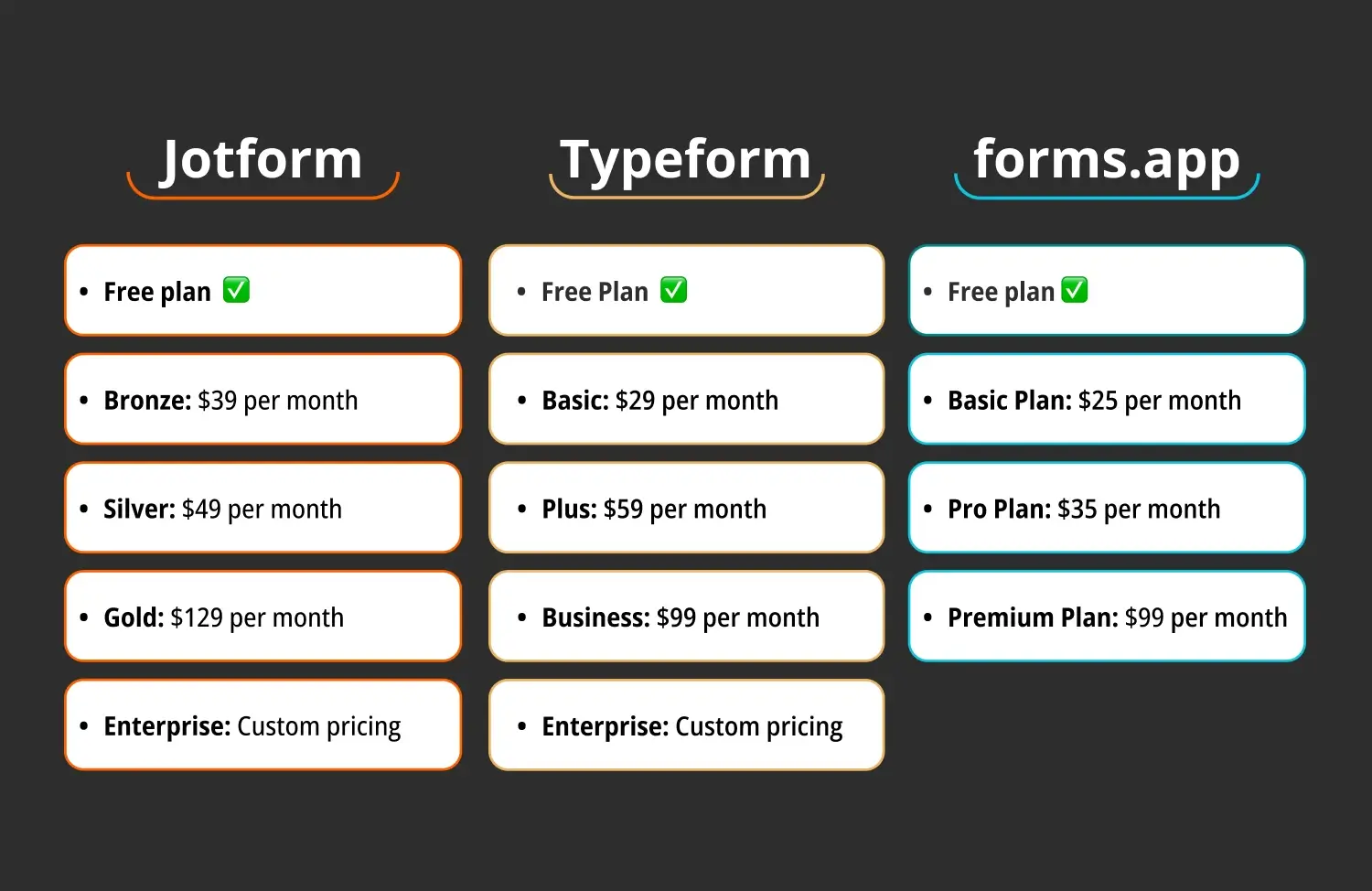
Jotform, Typeform ve forms.app arasındaki fiyat karşılaştırması
Jotform, cömert bir ücretsiz planla başlayan ve üç ücretli kademeye kadar uzanan fiyatlandırma planları sunar: Aylık $39’dan başlayan fiyatlarla Bronz, Gümüş ve Altın. Ücretsiz plan temel işlevleri sağlarken ücretli planlar arttırılmış form limitleri ve form gönderimlerinin kilidini açar. Bununla birlikte, kapsamlı yetenekler arayan küçük ekipler ve kuruluşlar için bu ücretli planlar pahalı olabilir. İşte Jotform'un fiyatlandırma planları:
- Ücretsiz plan ✅
- Bronz: Ayda $39
- Gümüş: Ayda $49
- Altın: Ayda $129
- Kurumsal: Özel fiyatlandırma
Typeform, farklı ihtiyaçları karşılamak için farklı fiyatlandırma planları geliştirmiştir. Platform ayrıca ücretsiz bir plan sunar. Sınırsız form oluşturma ve AI kullanımına izin verir ancak aylık yanıt limitini 10 ile sınırlar. Daha kapsamlı özellikler arayan kullanıcılar için Typeform'un ücretli planları Temel, Artı, ve İş planlarını içerir ve aylık olarak $29'dan başlar. İşte Typeform'un fiyatlandırma planları:
- Ücretsiz plan ✅
- Temel: Ayda $29
- Artı: Ayda $59
- İş: Ayda $99
- Kurumsal: Özel fiyatlandırma
Eğer ekibiniz daha uygun bir fiyata daha gelişmiş özellikler ve yenilikçi çözümler arıyorsa, forms.app'i değerlendirmenizi öneririz. forms.app, tüm özelliklere ve şablonlara tam erişim sağlayan ücretsiz bir plan sunar. Daha kapsamlı ihtiyaçlar için forms.app'in ücretli planları ayda $25’dan başlayarak ek avantajlar ve yetenekler sunar. forms.app tarafından sunulan tüm fiyatlandırma planlarını keşfedin:
- Ücretsiz plan ✅
- Temel Plan: Ayda $25
- Pro Plan: Ayda $35
- Premium Plan: Ayda $99
2. Form özellikleri
Form özelliklerine geçecek olursak Jotform, sürükle ve bırak arayüzü, özelleştirilebilir şablonlar ve mobil optimizasyon dahil olmak üzere etkileyici bir dizi araç sunar. Platform, sizin ve ekibinizin hem geleneksel hem de etkileşimsel formları kolaylıkla oluşturmanıza yardımcı olacaktır. Ayrıca Gold plan, HIPAA uyumluluğuna erişim sağlayarak hassas bilgiler için veri güvenliği sağlar.
Buna karşılık Typeform'un temel odak noktası, ilgi çekici bir kullanıcı deneyimi sağlayan diyalog formlarıdır. Ödeme tahsilatını yalnızca Stripe entegrasyonu aracılığıyla destekler. Bu da esnekliği sınırlar. Typeform ayrıca soru oluşturmada size yardımcı olacak yapay zeka yetenekleri de barındırır. Güçlü koşullu mantığı ile alanları gizleyebilir, dallanan sorular gösterebilir ve kullanıcı yanıtlarına göre değerleri hesaplayabilirsiniz.
Typeform ve Jotform alternatifleri hakkında konuşacak olursak forms.app size tüm temel özellikleri barındıran sezgisel bir oluşturucu sunar. Güçlü koşullu mantık, hesaplamalı formlar için bir hesap makinesi işlevi, hedefli veri toplama için coğrafi konum kısıtlamaları ve ödeme toplama özelliğine sahiptir. En önemlisi, tüm bu özellikler ücretsiz planda mevcuttur. Bu da onu hem pratik hem de uygun fiyatlı hale getirir.
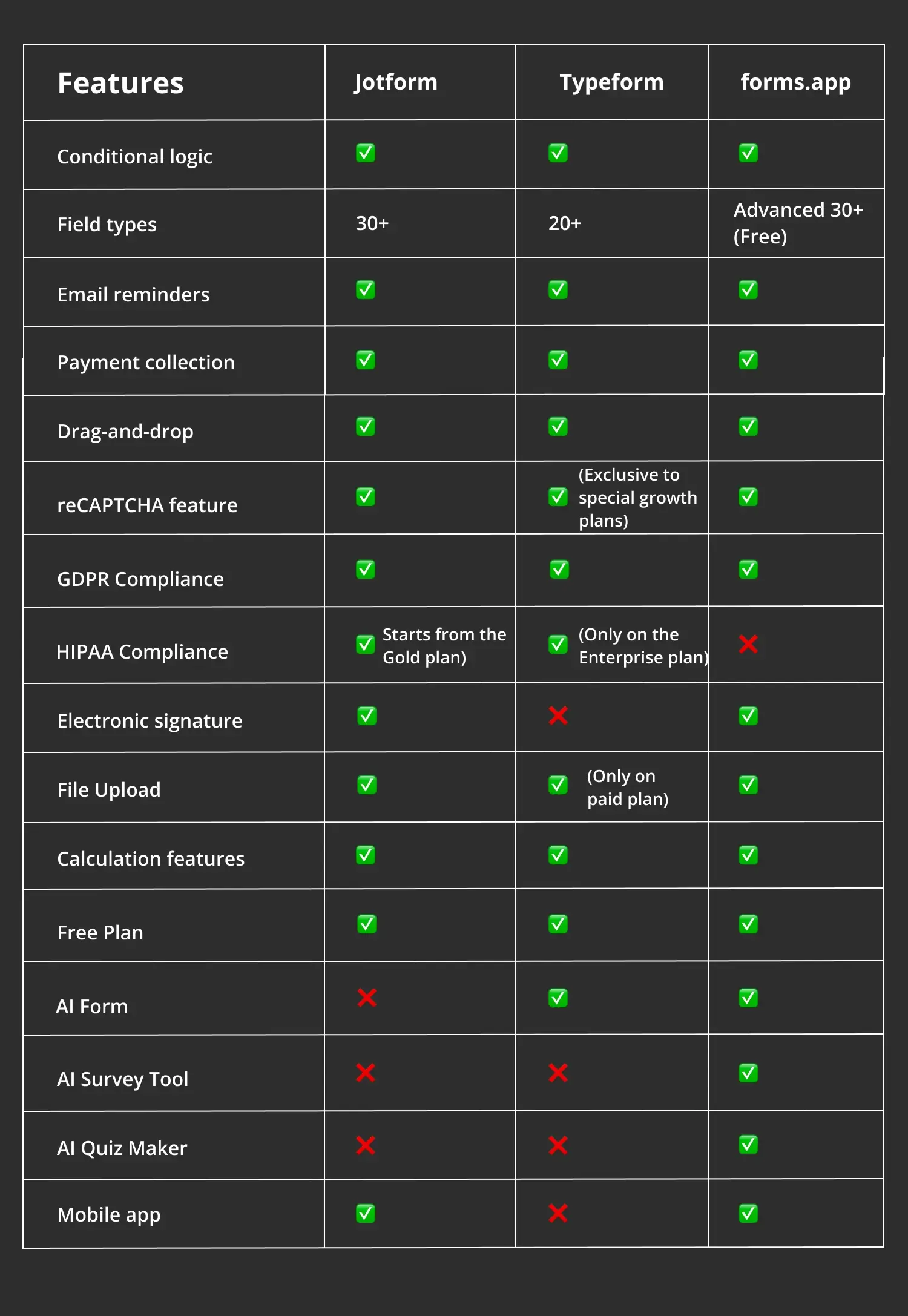
Jotform, Typeform ve forms.app arasındaki özellik karşılaştırması
3. Özelleştirme seçenekleri
Jotform, birçok güçlü özelleştirme aracına sahiptir. Onunla özel temalar oluşturabilir, resimler ve videolar ekleyebilir, yazı tiplerini ve renkleri seçebilir ve kodlama yapmadan özel CSS uygulayabilirsiniz. Sürükle ve bırak form tasarımcısı, formunuzun arka planını zahmetsizce kişiselleştirmenize ve diğer öğeleri özelleştirmenize olanak tanır. Ayrıca, video soruları ekleyerek formlarınızı geliştirebilir ve müşteri deneyimini arttırabilirsiniz.
Typeform ise formlarınızı markanızla eşleştirmek için logo ekleme, renkleri özelleştirme, yazı tipi seçme ve resim veya GIF'leri dahil etme gibi özelleştirme yetenekleri sunar. Ayrıca Typeform, logolar, benzersiz renk paletleri ve yeniden kullanılabilir temalar içeren marka kitleri sağlar. Bununla birlikte, gelişmiş markalama seçenekleri çoğunlukla ücretli planlarda mevcuttur. Bu da temel planı kullanan kişiler için bazı özelleştirmeleri sınırlayabilir.
4. Alan tipleri
Jotform'un 30'dan fazla farklı alan tipi vardır ve ihtiyaçlarınızın çoğuna uygun olacak şekilde tasarlanmıştır. Bu alanlar metin kutuları, açılır menüler, ve çoktan seçmeli sorular gibi temel öğeleri içerir. Ayrıca tarih seçicileri, imza alanları, ve ürün listeleri gibi daha gelişmiş öğeleri de barındırır. Jotform'un farklı amaçlar için özel widget'ları vardır; örneğin resim kaydırıcısı ve hesap makinesi. Bu da formlarınızı daha işlevsel hale getirir.
Typeform da çeşitli alanlar sağlar. Bunlar arasında iletişim bilgisi alanları, çoktan seçmeli sorular, derecelendirme ölçekleri, metin ve daha fazlası yer alır. Ancak platform belirli alan türlerinin kullanımını sınırlar; örneğin ödeme toplama, dosya yükleme, ve video soruları üst düzey fiyatlandırma planlarına dahildir. Bu kısıtlama, bu alanların kullanıcılar için özellikle faydalı olması nedeniyle dezavantaj yaratabilir.
forms.app'i tercih etmek, 30'dan fazla benzersiz alana anında erişebileceğiniz anlamına gelir. Dahası, tüm bu alanlar ücretsiz bir planda bile mevcuttur.
5. Entegrasyonlar
Jotform'un 150'den fazla yerleşik entegrasyonu vardır ki bu da çeşitli üçüncü taraf uygulamalarla bağlantı kurmak için etkileyici bir çözümdür. Platform, HubSpot, Mailchimp, ve Salesforce gibi temel araçlarla sorunsuz bir şekilde entegre olur. Ayrıca güvenilir ödeme işlemcileriyle de entegrasyonu vardır. Jotform, PayPal, Apple Pay, Google Pay ve Venmo dahil olmak üzere toplamda 40 ödeme seçeneği sunar.
Typeform, popüler entegrasyonlar sunar ve size zaman kazandırmaya yardımcı olur. Calendly ile toplantılarınızı planlamak, ziyaretçileri çekmek ve potansiyel müşterilere dönüştürmek için HubSpot ve kişiselleştirilmiş pazarlama için Klaviyo ile sorunsuz bir şekilde entegre olur. Typeform'un entegrasyon yetenekleri, analiz ve raporlama, otomasyon, iş birliği ve müşteri desteği gibi çeşitli kategorilere yayılır. Ayrıca, Zapier ile entegre olarak sayısız araca bağlanabilir.
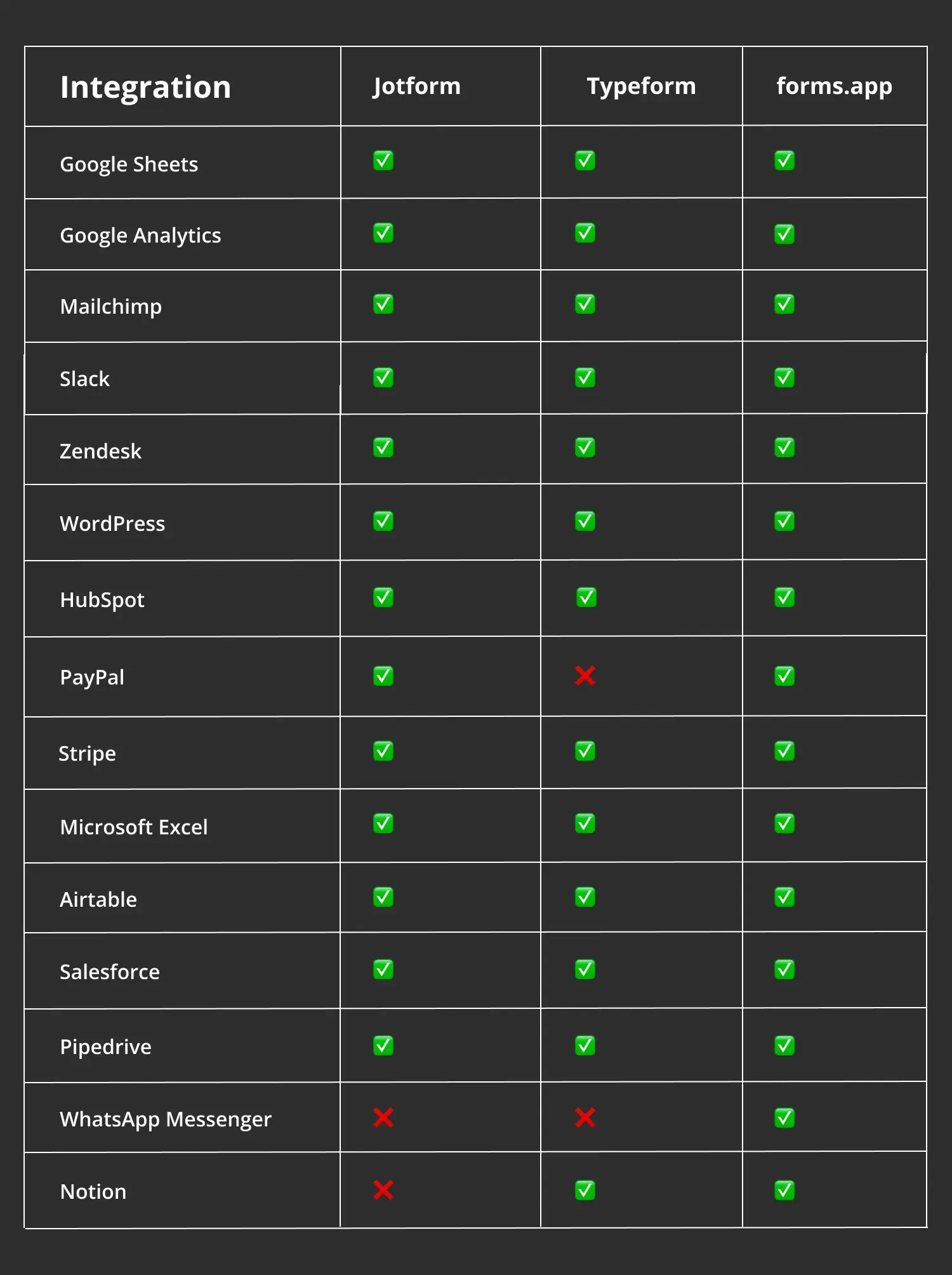
Jotform, Typeform ve forms.app arasındaki entegrasyon karşılaştırması
6. Ekip iş birliği
Jotform, paylaşılabilir bağlantılar, alt kullanıcı erişimi ve form gömme gibi özelliklerle ekip iş birliğinde başarılıdır. Jotform tabloları ve Jotform gelen kutusu kullanarak gerçek zamanlı şekilde iş birliği yapabilirsiniz. Ayrıca, Jotform mobil formlar ile belgelerinizi çevrim dışı bile yönetebilirsiniz. Jotform ayrıca, üretkenlik aracı entegrasyonları, bildirim e-postaları ve otomatik hatırlatma e-postaları sunarak sorunsuz bir ekip çalışması sağlar.
Typeform'da ise iş birliği yapmak için Plus planına veya daha yüksek bir plana ihtiyacınız vardır. Typeform kullanıcılarıyla iş birliği yapmak için plan türlerinden bağımsız olarak çalışma alanlarını paylaşabilirsiniz. Çalışanlarınızı organizasyonunuza ve çalışma alanlarınıza davet edebilir; bunları birlikte oluşturabilir veya bu alanlara erişebilirsiniz. Atayabileceğiniz roller arasında sahip, düzenleyici (oluşturma ve değiştirme yetkisi) ve görüntüleyici (sadece görüntüleme yetkisi) bulunur.

Typeform incelemesi
7. Şablonlar
Jotform, 10.000'den fazla form şablonuyla gerçekten güçlü bir rakiptir. Zengin kütüphanesi, sipariş formları, kayıt formları, etkinlik kayıt formları, ödeme formları, çeşitli başvurular ve daha fazlası gibi çeşitli çözümler içerir. Ayrıca, Jotform, dünya çapındaki müşteriler için çok yönlü ve kapsamlı bir araç olmak için çoklu dilde şablonlar sunar.
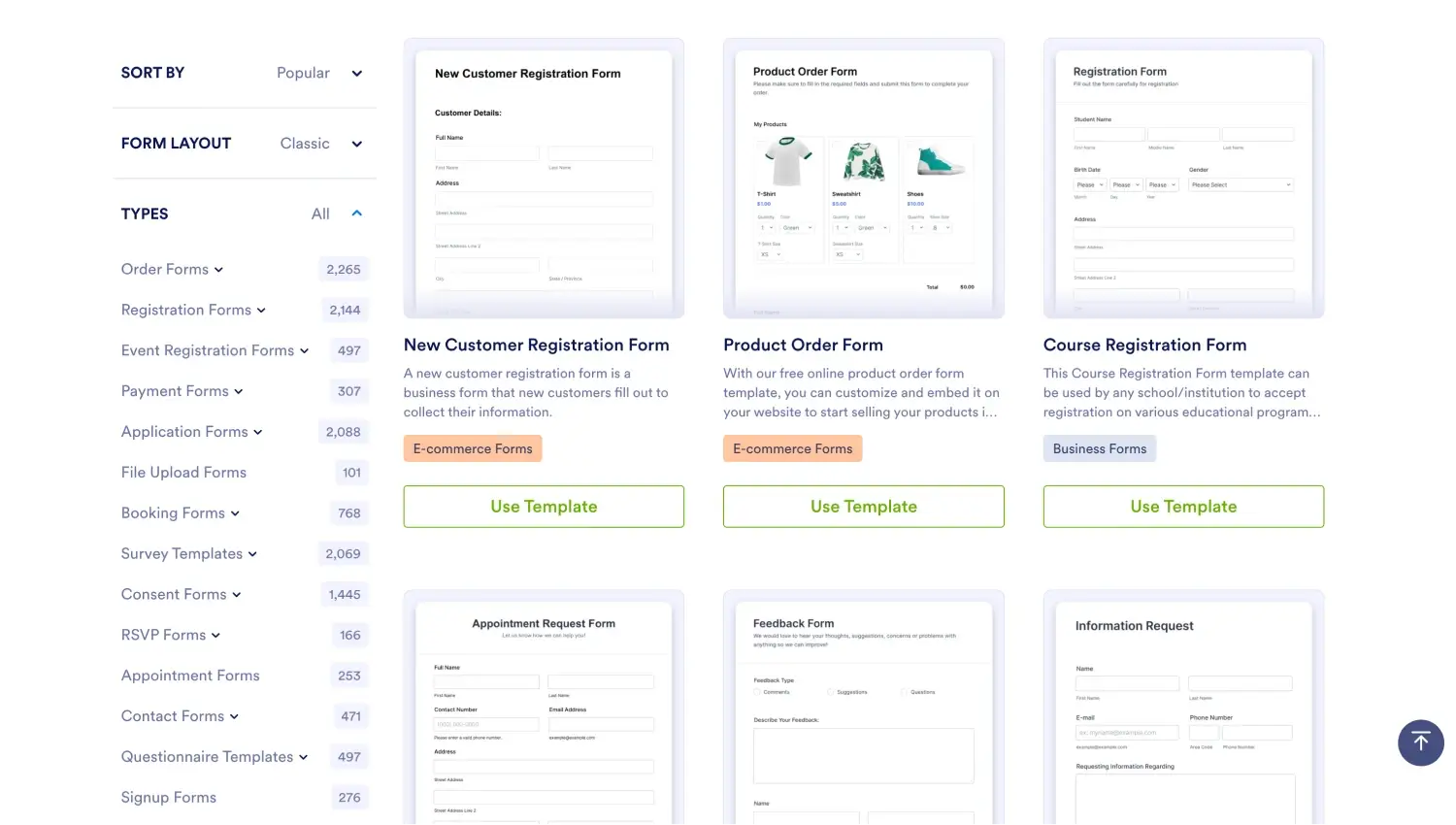
Jotform'un şablon galerisi
Typeform, formlar, anketler ve testler için 600'den fazla şablon sunar. Pazarlama, ürün, satış, müşteri başarısı ve İK gibi farklı roller için çeşitli ihtiyaçları karşılar. Typeform ayrıca gelecekteki formlarınız için sorular oluşturmanıza yardımcı olan AI destekli bir özellik sunar. İhtiyacınıza uygun etkili ve uygun öneriler üreterek form oluşturma deneyiminizi geliştirir.
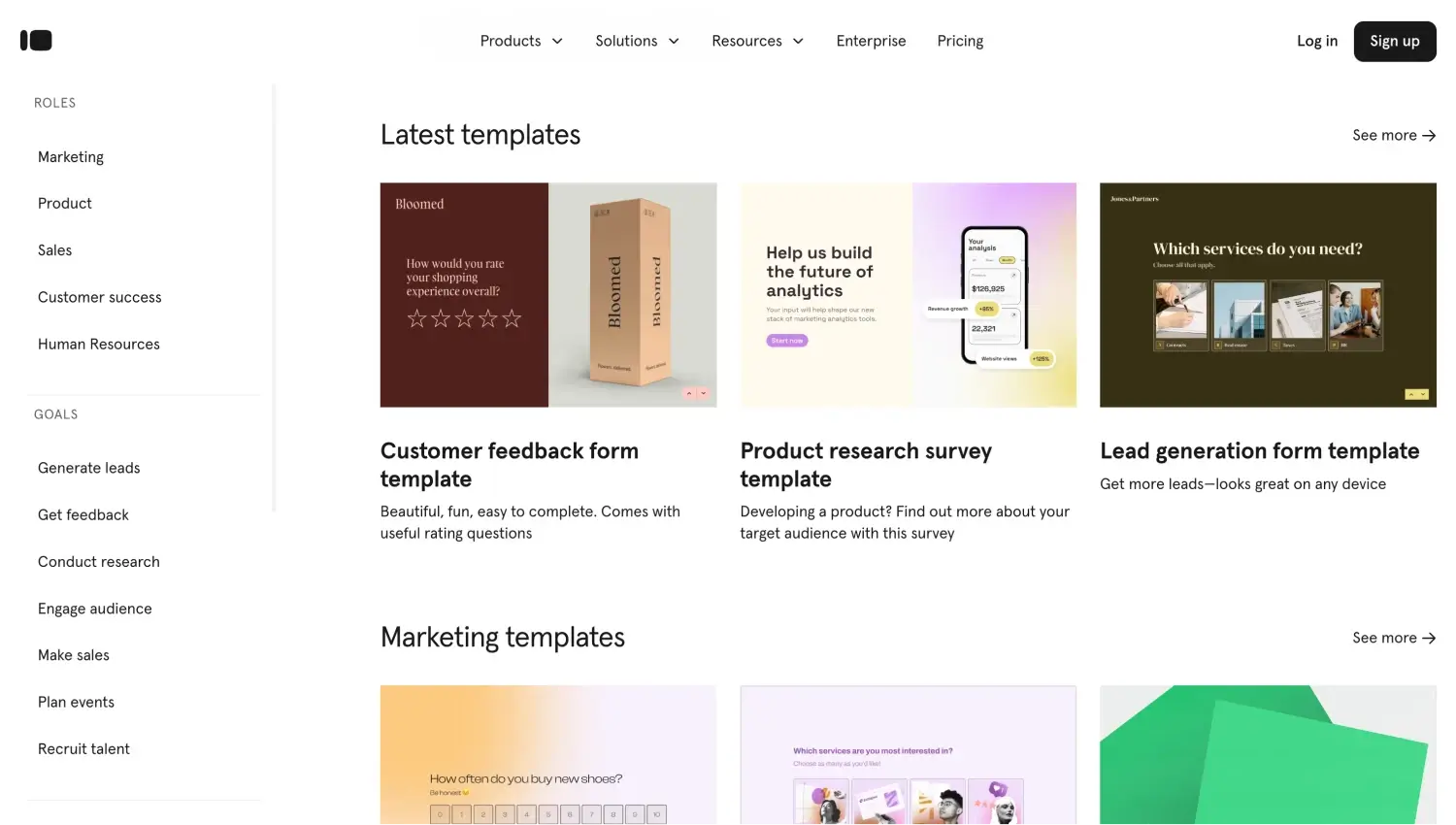
Typeform'un şablon galerisi
Bu iki platformun yeteneklerine rağmen, Jotform ve Typeform'a muhteşem bir alternatif önerimiz var. forms.app, herhangi bir form ve belge oluşturmak için 5000'den fazla ücretsiz şablon sunar. AI form oluşturucu, AI test oluşturucu ve AI ile yeniden yazma özelliği sayesinde etkileyici, işlevsel web formları oluşturmak ve içeriğinizi geliştirmek kolaylaşır.
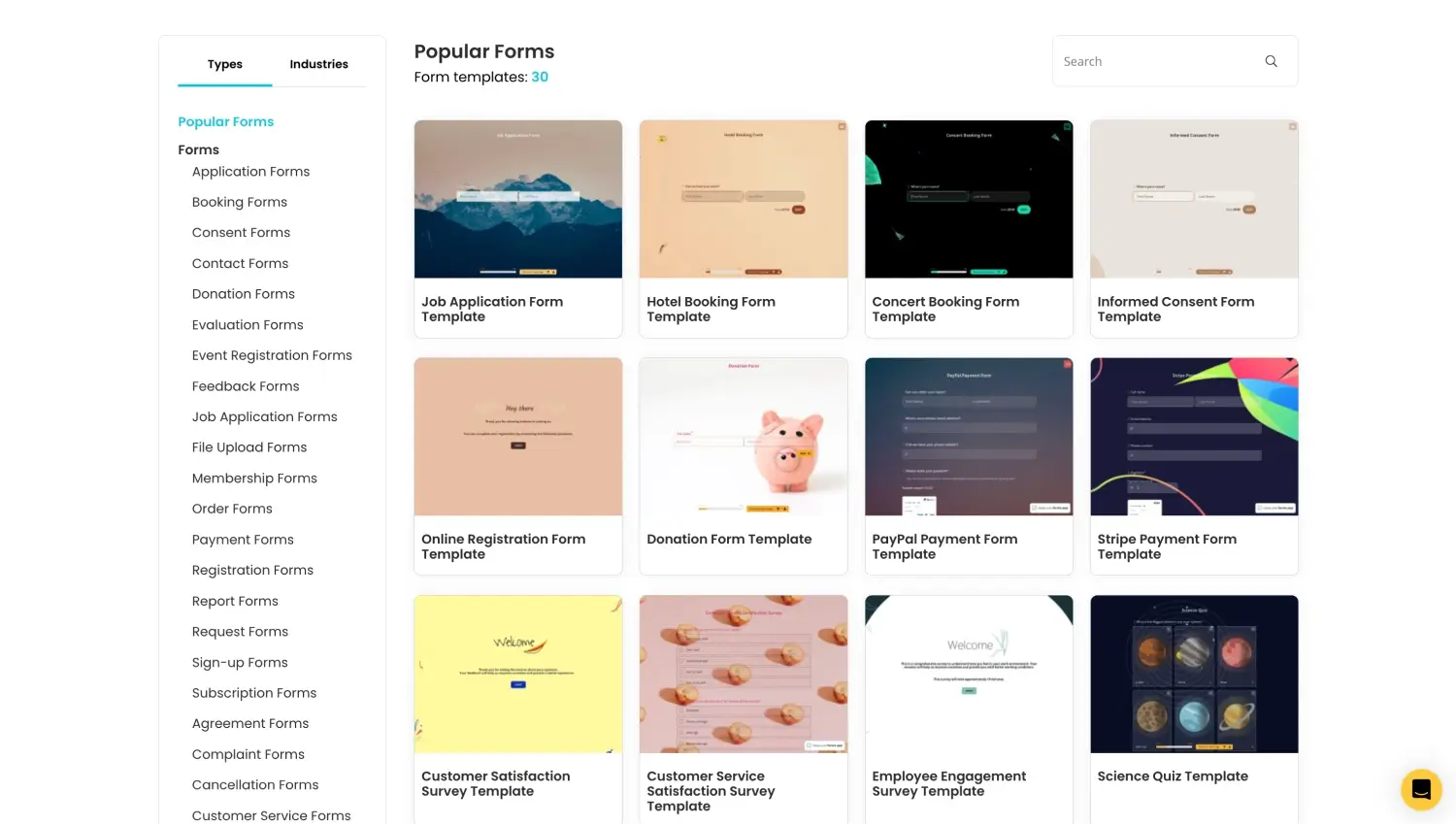
forms.app'in şablon galerisi
Daha iyi bir alternatif: forms.app
Doğru platformu seçmek, günümüzde çok sayıda seçenek olması nedeniyle kafa karıştırıcı olabilir. Bazı araçlar, fiyatlandırma planları nedeniyle küçük ekipler veya bireysel çalışanlar için mükemmelken, diğerleri etkili form oluşturma ve iş birliği yetenekleri arayan kuruluşlara hitap eder. Bu nedenle, alternatif uygulamaları keşfetmek her zaman faydalıdır.
forms.app, form oluşturma sürecinizi dönüştürecek gelişmiş bir AI destekli çevrim içi form oluşturucudur. İşletmeler ve bireyler için ideal olan çeşitli formlar, anketler ve testler oluşturmayı basitleştirir. forms.app ile değerli bilgileri toplamak ve veri analizi yapmak kolaylaşır. Aşağıda, platformun temel özelliklerini inceleyebilirsiniz:
📚 Kapsamlı şablon kütüphanesi: forms.app, çeşitli alanlar ve ihtiyaçlar için özel olarak tasarlanmış 5000'den fazla şablona sahiptir. Bu şablonlar, tüm form oluşturma gereksinimlerinizi karşılar ve verimlilik sunar.
✨ Kullanıcı dostu arayüz: Form oluşturma konusunda tecrübesiz veya deneyimli de olsanız, forms.app'in sürükle ve bırak form düzenleyicisi sorunsuz bir deneyim sağlar ve profesyonel sonuçlar garanti eder.
🧩 Güçlü entegrasyonlar: Bu araç, Slack, HubSpot, WordPress, Stripe, PayPal ve Google Drive gibi popüler üçüncü taraf uygulamalarla sorunsuz bir şekilde bağlantı kurar. Bu entegrasyonlar, üretkenliğinizi arttıracak ve iş akışınızı hızlandıracaktır.
🤖 Güçlü yapay zeka araçları: forms.app, AI Form Oluşturucu, AI Anket Aracı, ve AI Quiz Oluşturucu gibi yapay zeka destekli özelliklere sahiptir. Bu özellikler bağımsız olarak çalışır ve her türlü form için etkileyici sonuçlar verir.
📱 Mobil uygulama: forms.app'ın Google Play Store ve Apple Store'da bulunan mobil uygulaması sayesinde form oluşturabilirsiniz. Bu uygulama, masaüstü ve mobil platformlar arasında üretken kalmanızı ve ekibinizin üretkenliğini sağlar.
Sonuç
Makalemizde, form oluşturucu pazarındaki iki güçlü ve popüler araç olan Jotform ve Typeform arasında karşılaştırma yaptık. Her ikisi de kapsamlı yetenekler sunarken her aracın kendi sınırlamaları da vardır ve bu sınırlamalar iş süreçleriniz için önemli olabilir. Bu nedenle, bu iki platform arasından seçim yapmak ve hangisinin daha iyi olduğunu söylemek, iş hedeflerinize ve form oluşturma ihtiyaçlarınıza bağlıdır.
Son bir bonus; aracın arayüzü, kullanıcı dostu olması, fiyatlandırma planları, gelişmiş özelliklere erişim ve elbette yardımcı yapay zeka güçleri uygulama seçim yolculuğunuzda büyük bir oyun değiştirici olabilir. Jotform ve Typeform alternatifi-forms.app, bu özelliklerin tümüne sahiptir ve kesinlikle değerlendirmeye değerdir.
Ekin forms.app'de içerik yazarıdır. Reklamcılık ve tüketici davranışları konularında araştırma yapmayı sever. Pazarlama ve tüketim alışkanlıkları konusunda uzmandır.
forms.app, ücretsiz form aracınız
- Sınırsız görüntüleme
- Sınırsız soru
- Sınırsız bildirim
